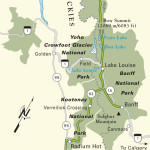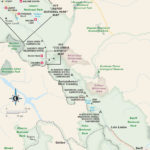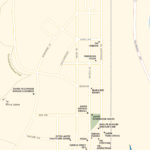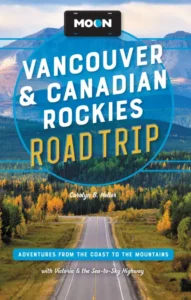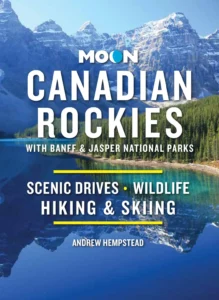Town of Jasper
Visiting the Town of Jasper
The northernmost point on Hwy-93, at the junction of the Icefields Parkway with the cross-country Yellowhead Highway (Hwy-16), which links Edmonton with Prince Rupert, the town of Jasper (pop. 4,590) preserves its frontier character intact. Unlike Banff, which exudes wealth and comfort, Jasper, which became an incorporated entity only in 2001 and is officially referred to as the “Town of Jasper” to differentiate it from Jasper National Park, is a rough-and-ready workaday sort of place. Founded on fur trading and mining, Jasper boomed when a cross-Canada railroad came through in 1911, but since the establishment of the national park in 1930, Jasper has served primarily as a handy base for exploring the wilds that surround it.
The main attractions are in the national park, but a few are located close to town. First and foremost of these is probably the Jasper Skytram (780/852-3093, daily mid-Mar.-Oct., C$50 adults, C$26 kids), which lifts passengers 3,200 vertical ft up (2,469-m) the steep north face of the Whistlers in under 10 minutes. From the upper terminal of the tramway, you can follow a 0.87-mi (1.4-km) path to the 8,100-ft (2,469-m) summit for a breathtaking panorama south to the Columbia Icefield and (on a clear day) northwest to Mt. Robson, the highest point of the Canadian Rockies at 12,972 feet (3,954 meters) above sea level.
The other big draw is Maligne Canyon, 165 ft (50-m) but so narrow in places that squirrels can leap from rim to rim. Trails lead around and across it, and in winter you can join a guided Sundog tour (888/786-3641, C$69) along the bottom of the narrow, ice-covered gorge. Beyond Maligne Canyon is one of the prettiest lakes in the Canadian Rockies, Maligne Lake. Hiking trails lead along the shore and to panoramic viewpoints, but it is the cruise to Spirit Island (888/269-0524, C$85) that attracts most visitors.
Where to Eat and Stay in Jasper
Jasper’s compact center, sandwiched between the west bank of the Athabasca River and a wide bench of land dotted with forest-encircled lakes, holds all the cafés and gift shops you could want within a block of the main drag, Connaught Drive. The Bear’s Paw Bakery (4 Pyramid Rd., 780/852-3233), off Connaught has cinnamon buns, great pastries, breakfast sandwiches, and anything else you need to start the day off right. Jasper Pizza Place (402 Connaught Dr., 780/852-3225), two blocks north, has wood-fired ovens and walls covered in photos of Jasper in the early days.
Another lively spot is the restaurant and lounge on the ground floor of the Athabasca Hotel (510 Patricia St., 780/852-3386, C$99-350 peak season, C$139-425 off-season), which also has Jasper’s least expensive in-town lodging. Jasper’s most expensive place to stay is the Fairmont Jasper Park Lodge (780/852-3301, C$229 and up), a grand mountain resort dating back to 1922 but now a mostly modern resort offering 446 rooms, plus golfing and horseback riding, on a lovely site across from town on the other side of the Athabasca River.
Budget travelers may want to take advantage of the hostels around Jasper, including the 75-bed HI-Jasper Hostel (C$35 and up per person), 5 mi (8 km) south of Jasper on the road to the Jasper Tramway, and the smaller and more rustic HI-Maligne Canyon Hostel (C$30 and up per person), a short walk from the canyon. Hostel reservations (780/852-3205 or 778/328-2220) for either hostel, and for other hostels in Jasper National Park, can be made by phone. There are also two large campgrounds, Whistlers and Wapiti, along Hwy-93 on the south side of Jasper, with over 1,200 sites altogether, some with RV hookups.
For details on hiking and camping options, or to purchase the required entrance passes and backcountry camping permits, go to the Parks Canada information centre (780/852-6176) in a lovely old stone building off Connaught Drive in Athabasca Park; for complete accommodations information, including listings of rooms available in private homes, talk to the folks at the Jasper Visitors Centre (780/852-6236), which shares the space.
Related Travel Guides
Maps of the Border to Border Route through Canada
